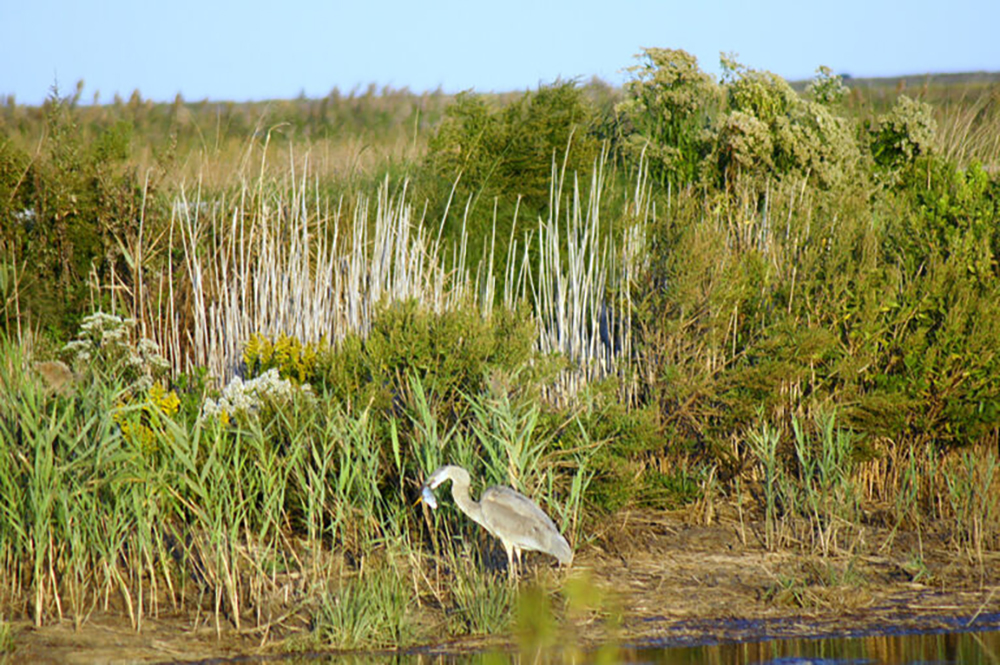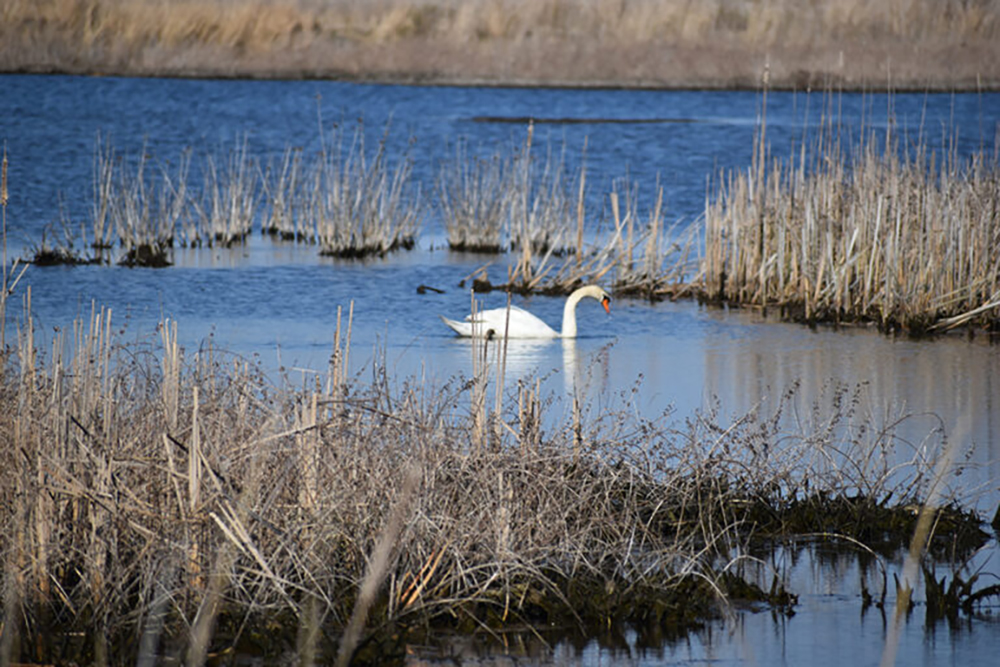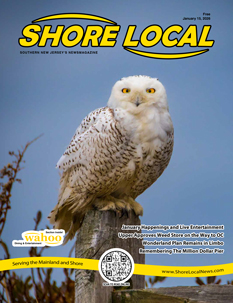By Chloe Cramutola
Picture this: coastal habitats and lush, vibrant wetlands. Imagine hiking trails and observation towers equipped with spotting scopes to view at least 360 species of birds. Envision an 8-mile, unpaved road to drive through and bask in the flora and fauna.
This is the Edwin B. Forsythe National Wildlife Refuge. Protecting more than 47,000 acres of South Jersey’s coastal habitats and woodlands, the refuge is actively managed for migratory birds, as it is a critical link during the seasonal bird migration.
The U.S. Fish and Wildlife Service conserves and monitors plants and wildlife, restoring and managing habitats and allowing the public to enjoy outdoor recreation. With that being said, the refuge offers a variety of activities for visitors. Whether it’s hiking, fishing or simply taking in the scenery, there is something for everyone.
The Wildlife Drive self-guided auto tour
Known as a birding “hot spot,” species of waterfowl, shorebirds and seabirds can be found along this 8-mile-long Wildlife Drive. Protected sites along the coastline support beach-nesting birds such as the American oystercatcher, least tern, black skimmer and common tern.
This tour will take visitors through the saltwater marsh, freshwater habitat and upland forest. There are observation towers located at Gull Pond and Turtle Cove.

Photo credit: Jim Munroe
Eight miles of hiking trails
Enjoy the greenery and wildlife through three accessible trails: The Akers Woodland Trail and Leeds Eco-Trail in Galloway Township, or the Cedar Bonnet Island Trail in Stafford Township. At Cedar Bonnet Island, visitors can bike and hike on permitted gravel trails only.
Fishing
The refuge offers the opportunity to fish in both freshwater and saltwater.
Lily Lake and Middle Branch offer freshwater fishing opportunities. There is also a boat ramp at Scotts Landing in Galloway for multiple saltwater fishing opportunities.
Note that fishing is not permitted from land anywhere along Wildlife Drive.
Hunting
Opportunities for hunting deer, migratory birds, squirrels and turkeys are available at Forsythe. The refuge’s website provides information about the deer hunt lottery and an interactive map to find a favorite hunting spot. Visitors can download maps for access, parking and refuge hunting information.
A $25 hunting permit is required to hunt on the refuge, in addition to required state and federal permits, stamps and licenses. One annual permit allows for hunting during all seasons.

Photo credit: Jim Munroe
Enjoy with a friend: Dog walking
Refuge visitors may enjoy the summer breeze with their dogs as long as pets are attached to a leash and the pet walker is in control at all times.
Pet walking is allowed on the following trails: Wildlife Drive, Bristow Trail, Jen’s Trail, Grassland Trail, deCamp Wildlife Trail, Cedar Bonnet Island Trail and Eno’s Pond Trail.
Pet walking is not permitted on the following trails: Akers Woodland Trail, Leeds Eco-trail
Barnegat Overlook and Graveling Point Trail. No pets are permitted on Holgate Beach at any time during the year.
Boating, including kayaking and canoeing
Forsythe offers opportunities for both motorized and non-motorized boats.
Motorized boats can embark at the Scotts Landing boat ramp, while non-motorized boats (canoes or kayaks) can set off at the Lily Lake Kayak Launch.
Be creative with painting, drawing and photography
Not only is painting and sketching in nature possible at all of the refuge’s open sites, it is encouraged. Sometimes, sites will host public displays of artworks created on the refuge – a sign to grab the brush or sketchpad, lay in the grass and soak in the scenery.
Whether a visitor is touring through the Wildlife Drive or hiking trails, photography is welcome. Capture the wetlands, woodlands and open marsh. Snap a perfect shot of a sandpiper spreading its wings or a cricket frog hopping in the grass.
Grab a basket and plan a picnic
Plan a day with the family and make some sandwiches. There are a few picnic areas located across the refuge, including one at Refuge Headquarters near the Visitor Information Center. There are two other picnic areas along Cedar Bonnet Island Trail.
Visitor information
Trails and Wildlife Drive are open daily, sunrise to sunset. Entrance to Wildlife Drive is $4 per car. The Visitor Information Center is open Wednesday to Sunday, 10 a.m. to 2 p.m. More information can be found on the refuge’s official website.
Chloe is a multimedia editor and journalism major at Boston University, where she is Sports Editor at The Daily Free Press. She will be graduating Spring ’25. Connect with her on LinkedIn @chloecramutola








